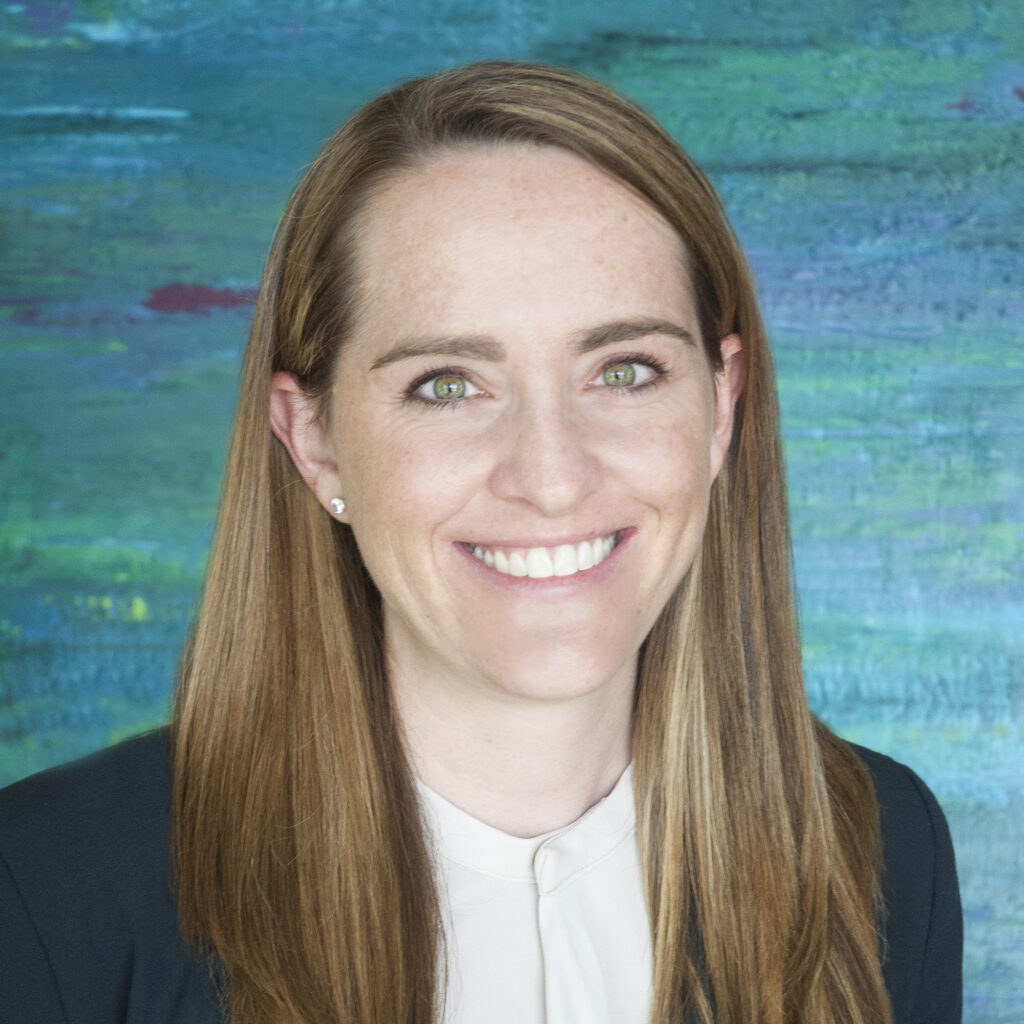Episode 4.5 of the Medical Affairs Unscripted podcast series recorded by Zipher, now part of Lumanity
In this Internal Edition of the Medical Affairs Unscripted podcast series, Dr Peg Crowley-Nowick is joined by Lumanity’s own Julie Cahill MD, VP Consulting and Medical Director Services, to continue the conversation from “Data Generation | The Intersection Between Medical Affairs and Clinical Development” by expanding further on the need to identify data gaps and how organizations can work together to consider the full scope of research that can be used to fill those gaps.
Dr Cahill, an industry expert and a board-certified general surgeon, shares how medical affairs, though often overlooked in early data generation planning initiatives, can actually be a strategic partner in building a cross-functional data generation program. Our host and expert guest discuss the importance of early consideration of potential data gaps, what data/evidence generation means to different companies, and when medical affairs should start planning for data generation. They also take us on a detailed tour on how to coordinate the collective and complementary perspectives of each of the functional areas to create a prioritized and persisting, but pliable data generation program. Dr Crowley-Nowick also asks Dr Cahill to provide an overview of the advantages and disadvantages of using technology to conduct these planning workshops in our unprecedented times of the COVID-19 pandemic.
Lastly, because of the ever-evolving organizational priorities and landscape of clinical care, the frequency in which a data generation program should be reviewed and refined is discussed as well as the value of developing a communication plan to ensure consistency in external messaging.
Podcast Series: Medical Affairs Unscripted
Hosted by Dr Peggy Crowley-Nowick, in Medical Affairs Unscripted we explore a range of topics related to the strategic role of medical affairs from the perspective of industry experts. Through these conversations with our guests we will share first hand experience to provide the listener with insights and knowledge about the evolving role of medical affairs.
Podcast transcript
Peg Crowley-Nowick 0:02
Welcome to the first season of medical affairs unscripted. I’m your host, Peg Crowley-Nowick, president and founder of Zipher Medical Affairs, a full-service consulting firm. During this podcast, we will explore a range of topics related to the strategic role of medical affairs from the perspective of industry experts. Through these conversations with our guests, we will share firsthand experience to provide the listener with insights and knowledge about the evolving role of medical affairs. Please stay tuned at the end of the podcast to learn more about Zipher.
A couple of weeks ago, we released a medical affairs unscripted podcast with Adam Schayowitz. In that conversation, we discussed the intersection of medical affairs and research and development. And one of the things that Adam emphasized, which to me was so important was the need to identify data gaps, and to work together as an organization to consider the full scope of research that could be used to fill those gaps. I wanted to continue that conversation. And today I’m joined by my colleague, Julie Cahill, Vice President of consulting services. She runs many of the data generation programs here at Zipher. And she’ll share her perspectives on how to initiate the planning for data and evidence generation. Hey, Julie, how are you today?
Julie Cahill 1:35
Hey, Peg, I’m doing great. Thanks for having me.
Peg Crowley-Nowick 1:37
Happy to have a chance to talk to you today. So, I’d love to start by just having you talk about your background.
Julie Cahill 1:46
Sure. So, I’ve been with Zipher for over four years now, prior to that I was in clinical practice as a general surgeon with specialization in breast surgery. Now, as Peg mentioned, I’m one of the vice presidents of the consulting services here at Zipher. And I help lead the team in strategy development, as well as the data generation program.
Peg Crowley-Nowick 2:07
And one of the things that always makes me happy to work with you on any of these projects is the fact that you bring a perspective from the medical side, the clinical side, and bring your scientific knowledge to the table. And it really makes a difference in the way our clients perceive Zipher — And what you can do with them from a data generation perspective. Let’s start the conversation, Julie, by talking to me about why you think it’s so important to consider data gaps and to build a data generation program.
Julie Cahill 2:39
I think it’s really important for medical affairs because data generation is one area that often gets overlooked. But it’s also an area where they can bring immense value. Medical Affairs sits in a unique position where with many of their programs and activities, they provide a bridge between the different functions within the organization. And data generation is definitely one of those areas, it gives them the opportunity to bring together the different perspectives from clinical development, HEOR, commercial, as well as other functions, it also can bring together the opinions of different regions. So, it’s an opportunity to leverage data generation beyond what the clinical development program does.
Peg Crowley-Nowick 3:24
So, I think when we talk to different clients and different companies, they have a different perspective on what data generation evidence generation is. And in some companies, I hear that it’s HEOR, and some they’re only thinking about the research and development. When you think about data generation lifecycle management, are those the same?
Julie Cahill 3:46
Yes and no, I think data generation can start prior to even a drug being launched. So, at that point, I wouldn’t say it’s in lifecycle management yet. But I do think it’s important to plan for what additional data generation needs to be done after launch. So, depending on where the drug is in development, I still think medical plays a really important role in data generation and whether or not you would classify those lifecycle management. If it’s early in development, I wouldn’t put it in that category.
Peg Crowley-Nowick 4:16
Well, it’s a great segue because it takes us into a conversation about planning, when to start planning and what it looks like from your perspective of how you start.
Julie Cahill 4:27
So, I think for medical affairs, and what I’ve seen as they’ve been able to move earlier and earlier in influencing the clinical development of a drug, and earlier in the programs, I think data generation is one of those things that they need to think early on. Yes, clinical development, with the company sponsored trials really drives the direction that the assets are going but I think Medical Affairs brings additional value to make sure that they have that information, that they’re prepared for the landscape and know what’s going on. So, if you can I would start Data Generation program early and looking at the landscape, what’s going on? What are the things you need to be thinking about? It, as everybody knows, it takes a few years for a clinical trial to read out. And you really need to be thinking about how the landscape is going to change. When that data reads out, what additional information do you need to make sure that you’re successful with your asset?
Peg Crowley-Nowick 5:20
Sure, as thorough a program you may have for development, the regulatory process is very different than the actual clinical utilization. So, there’s definitely room to fill some of the needs Once it moves into a clinical phase.
Julie Cahill 5:36
Exactly. And I think even just establishing that unmet need, where somebody would want to even consider your asset and know more about your drug or look at your data and see how it could benefit the patient.
Peg Crowley-Nowick 5:48
That’s very helpful to understand. Talk to me about how you start, what is it? What does it look like?
Julie Cahill 5:54
So, when we start, I think the biggest thing is actually bringing everybody together and hearing all the different perspectives. So, that way you can develop your strategy and prioritize what you’re going to do. Obviously, everybody would love to do everything, but we all know, resources are limited. So, usually, we start by holding a larger workshop where we bring together different functions from across the company. And we usually try to be very inclusive, so including clinical development and biostats, you can get that perspective, including HEOR, so you can think of the real-world perspective or other data sources that are available, including commercial, so you can think about things that they’re going to need when launch is coming. Or if you’re already launched, what are the things you do need? So, it’s really important to bring all those perspectives together, let everybody have a voice, brainstorm what are some of the key questions that need to be answered, and then really work together to prioritize those so that you can develop a sync plan that complements what’s going on with clinical development, but also provides additional benefit.
Peg Crowley-Nowick 6:52
And by bringing all those different functions together, they each have a different perspective, I would think there’s a lot of market research going on that commercial could contribute to the thinking, the boots on the ground and medical affairs have that those field insights that they’re bringing your competitive intelligence groups, they bring a different perspective on the landscape, your development team understands where they’re going in the future. So, I can see where all of that is important. What do the workshops look like?
Julie Cahill 7:22
So, typically we usually start to make sure everybody is on an equal playing field. And whether that’s, you know, presentations, during the workshop, or handing out pre-reads ahead of the workshop to keep the time a little bit shorter, either of those works, it just depends on the group. And then the key after that is to allow an open discussion for brainstorming of what are some of the gaps that are missing, and really letting this be kind of open free period where anybody can bring up anything, it doesn’t have to be the most important, you don’t have to go into extensive discussion about it. But really just getting all the ideas down on paper. The next part is really kind of voting and prioritizing, or at least doing an initial prioritization. Again, as I said, we’d love to address everything, but we know resources and time are limited. So, you do have to prioritize. After that initial prioritization is done is then doing a deeper dive into the gaps or the things, the questions that are important to answer and really thinking about how they could be answered, you know, what’s the rationale for doing it? What are the benefits? What are the risks? What’s the timeline? Is it feasible? Who would be responsible? Do we have the resources? After we’ve done that deeper discussion, it’s really looking back and prioritizing, again, sometimes, although it’s a really important question, people realize that it’s not something that’s going to be easily answered. And so maybe it’s not really your top priority after all.
Peg Crowley-Nowick 8:44
I’ve seen a number of these meetings executed by you, Julie. And it sounds so simple when you mentioned it, but it takes a lot of planning and a lot of effort to make sure that people have the information know how to talk about the data gaps. And really, I think one of the key pieces is how you facilitate a meeting to get people working together and thinking about the issues all going in the same direction. And as simple and straightforward as you’ve just described it, it certainly isn’t as easy to pull off as you’ve made it. But one of the areas that I’ve been most impressed with is the fact that you can do this virtually. It’s one thing to do it in person, but it’s another thing to do that virtually. What are your impressions of what you gain or lose in the virtual setting?
Julie Cahill 9:36
Sure. So, we did as you know, Peg, start doing these face-to-face when we kind of started them and I think everybody knows the benefits of face-to-face engagement, especially when you have people coming together from across different functions. Sometimes that helps the discussion to actually have everybody in the same room and virtually, that engagement and having people speak up can be very difficult. So, it was a bit of a transition, especially with COVID, when we started doing these, but I think the key is using platforms where it allows everybody to have a voice. Even if they’re not speaking, you know, can they have a voice by typing something out and letting everybody see it? I think one of the big benefits though, of having everybody virtual, as it has allowed us to engage people from across the globe, it’s easier for people to join, we do have to think about time zones and put it at more convenient time zones, and maybe make it shorter. But we have had different perspectives from different regions that we weren’t necessarily having when we did have a face-to-face meeting where people had to travel to get there. As we know, not everybody can always travel, but the virtual setting does allow for a larger participation.
Peg Crowley-Nowick 10:44
So, it can work either way, is what you’re telling me. What does it look like as a deliverable?
Julie Cahill 10:52
So, obviously when we come out of a workshop, we develop a report where we have the prioritized data gaps, and we have the initial thought out action plans. But you know, a data generation program can’t be developed in a four-to-eight-hour workshop. It’s really the follow through. So, people come up with great ideas during these workshops, but the ideas really need to be flushed out — Who’s responsible? What are the timelines? Is it feasible? The initial discussion happens, but there needs to be more thought through how it actually gets executed. So, I think the key is not only to come out with the report, but then to come out with a program where there is follow-up, there is program management of what’s going on. There are regular touch points where you’re bringing the functions back together, so we can talk about how things are happening. Are there issues that have come up where you realize these analyses can’t be done? You know, are there other questions that need to be answered instead? So, I think it’s that follow-through that’s really the important part of the deliverable.
Peg Crowley-Nowick 11:54
And how often would you go back and look at the plan, refine it, what’s the time and the frequency?
Julie Cahill 12:01
So, we found that actually doing monthly meetings have been really beneficial, just stay on top of projects and see how they’re going. I think some of it, though, probably depends on where you are in your life cycle of the drug. So, if it’s a drug that’s around launch, and things are happening, I would say, at least monthly meetings to make sure you’re staying on top of it. I think when things get launched, you hear additional feedback, you get additional insights, that may change your priority, you may realize that there’s a question you weren’t even thinking of that’s really impacting how people use the drug. I think if you’re a little earlier in development, or maybe a little bit later in the lifecycle, you can probably spread those out more, at least quarterly just to make sure people are touching base and seeing if anything needs to be adjusted. But during a launch period, or leading up to launch, I would suggest at least monthly meetings.
Peg Crowley-Nowick 12:51
One of the things that’s a challenge in any kind of large pharmaceutical company, especially a global organization is keeping everybody informed. And then not only that, but the people who are out meeting with customers, meeting with physicians, meeting with KOLs — they need to know how to communicate, do you do any work around the communication plan that comes out of this program?
Julie Cahill 13:17
So, one thing we’ve found is that involving publications in the data gap meetings and data gap workshops has been really critical. Often the publication teams do similar work on their own. So, rather than having it separate, bringing it all together, is very important. And they can build some of this into their publication planning. I think the other thing that actually we’ve come across more frequently is that, as everybody probably knows that not all analyses need to lead to a publication. Sometimes they’re just informative, or sometimes you realize that you don’t, you can’t have the answer. So, you need to think about the messaging. So, I think this is really important. So, the medical directors are very involved, obviously, in planning these workshops, planning these programs. But you know, if you can’t answer the question, yes, you need to think about how, as a company, you’re going to communicate that, you know, the question can’t be answered, or can it be answered in a different way? So, that’s a key piece. It’s not just with publications. And that’s something that has kind of arisen more recently, I guess, into our viewpoint when we’ve been doing some of these programs as something that needs to be worked on. But that’s where I think the medical director role comes in very important to kind of figure out what that messaging is, and to make sure it’s communicating across the group.
Peg Crowley-Nowick 14:22
So, a couple of things coming out of that, then, just to make sure that I’m understanding what you’re saying is, if there is a clinical gap or a data gap that’s identified, but the company can’t answer that through any type of research or existing data set. There doesn’t need to be communication points so that when somebody is asked in the field or if medical information is contacted, they can answer that question and tell people that it’s not as if it’s been ignored, but it can’t be answered today. Or, we don’t have the answer for that and make it very clear that it’s been considered.
Julie Cahill 15:04
Correct. And I think that’s really important, especially for some of the questions that you hear over and over. It’s, you know, the analysis can’t be done just due to the way the data is collected. I mean, most healthcare providers will understand that, but you just need to have a clear message of explaining it to them. You know why they can’t have that data? Not that you don’t want to give it to them. But we physically can’t answer that question at this point.
Peg Crowley-Nowick 15:27
Well, so if I could just briefly summarize, it certainly sounds as if data generation programs are incredibly important. They’re an intersection for the entire organization, not just R&D, and medical affairs, but it brings in all of the functions across the company. It’s a way to really build upon the insights that are collected within the organization. And its way to answer the questions that are needed for clinical utilization to identify signals for the future. And to be sure that your program continues to have a solid release of data through publications over an extended period of time. I’m then very excited to listen to this conversation and to learn how you’re running these programs. With a little bit more depth. Thank you very much for joining, Julie, and for sharing this information with us.
Julie Cahill 16:20
Thanks, Peg. Thanks for having me.

Episode guest
Julie Cahill, MD
Vice President, Consulting and Medical Director Services












